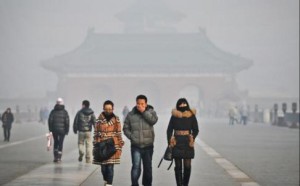June 4, 2014 – In yesterday’s Financial Times it was reported that a senior government advisor on climate change in China recommended the country place a cap on carbon emissions in the next five-year plan which would begin in 2016. For the Chinese the initiative by President Obama may finally end the dispute between the two countries over the issue of greenhouse gas (GHG) emissions. The Chinese have argued that the Western World has created the problem and therefore should take on the bulk of the responsibility while giving some slack to the Developing World which is only seeking to catch up. If that means burning coal, so be it.
What did the advisor actually say? According to Reuters, as reported in The Guardian, He Jiankun (seen below), Chairman of China’s Advisory Committee on Climate Change, made his remarks to a Beijing conference this week indicating an absolute cap on carbon emissions was to be introduced. In his words, “The government will use two ways to control CO2 emissions in the next five-year plan, by intensity and an absolute cap.” But later he downplayed his comments as being personal views and not yet government policy.
China today is the world’s largest GHG emitter having surpassed the United States in the last decade. China is choking on air pollution from coal-fired power plants blamed for the deadly smog that inundates much of the eastern half of the country for weeks at a time. Since 2000 the country’s carbon emissions have grown at a rate of 10% per year. But it wasn’t until 2009 that the country set its first carbon emissions target. Before that China applied carbon-intensity targets for unit of economic activity following a similar scheme to the one used by Canada in measuring carbon output from the Alberta oil sands. By 2012, however, it was obvious that carbon emission and intensity targets were not working with country’s CO2 emissions growing to 29% of global GHGs.Today China’s CO2 emissions have reached over 9 billion tons per year and are expected to peak at 11 billion tons before beginning to decline. Compare that to the United States which in 2012 emitted 6.5 billion tons, a decline of 3.4% from 2011. China today, therefore, is clearly in a position to impact the world’s climate more than any other country on the planet.
If the government takes their advisor’s advice maybe this will presage the beginning of a concerted effort to achieve global agreement on a carbon cap and GHGs at Paris in 2015.










